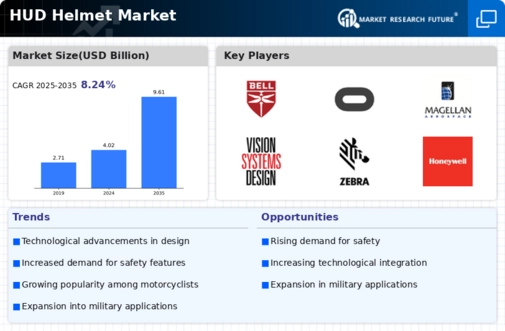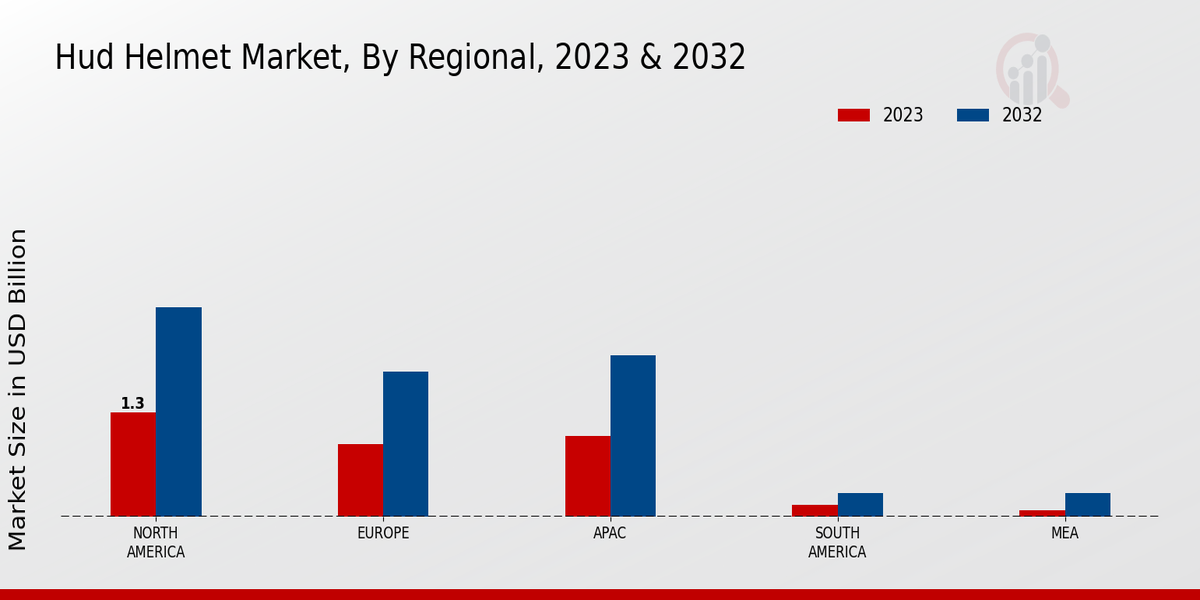Market Growth Projections
The Global HUD Helmet Market Industry is projected to experience substantial growth over the next decade. With a market value of 4.02 USD Billion in 2024, the industry is anticipated to expand significantly, reaching 9.61 USD Billion by 2035. This growth trajectory suggests a compound annual growth rate of 8.25% from 2025 to 2035, driven by various factors such as technological advancements, increased safety regulations, and expanding consumer markets. The upward trend in market value indicates a robust demand for HUD helmets across multiple sectors, highlighting the industry's potential for future development.
Rising Safety Regulations
The Global HUD Helmet Market Industry is significantly influenced by the increasing emphasis on safety regulations across various sectors. Governments and regulatory bodies are mandating the use of advanced protective gear, including HUD helmets, to reduce workplace accidents and enhance safety standards. For example, in construction and industrial environments, compliance with safety regulations is becoming more stringent, leading to a higher adoption rate of HUD helmets. This regulatory push is expected to contribute to a compound annual growth rate of 8.25% from 2025 to 2035, as organizations seek to meet compliance requirements while ensuring the safety of their workforce.
Technological Advancements
The Global HUD Helmet Market Industry is experiencing rapid technological advancements that enhance the functionality and user experience of helmets. Innovations such as augmented reality integration and improved display technologies are becoming increasingly prevalent. For instance, manufacturers are incorporating heads-up displays that provide real-time data, navigation, and communication features directly within the helmet's visor. This trend not only improves safety but also increases situational awareness for users in various sectors, including military and construction. As a result, the market is projected to grow from 4.02 USD Billion in 2024 to an estimated 9.61 USD Billion by 2035, reflecting a robust demand for advanced helmet solutions.
Expansion of Consumer Markets
The Global HUD Helmet Market Industry is expanding beyond traditional sectors into consumer markets, particularly in sports and recreational activities. As outdoor sports gain popularity, there is a growing demand for helmets equipped with HUD technology that offers features like performance tracking and navigation assistance. For instance, cyclists and motorcyclists are increasingly seeking helmets that provide real-time data on speed and route information. This diversification into consumer applications is expected to drive market growth, as manufacturers tailor products to meet the needs of recreational users, thereby broadening the market's reach and appeal.
Growing Demand in Military Applications
The Global HUD Helmet Market Industry is witnessing a surge in demand driven by military applications. Armed forces worldwide are increasingly adopting HUD helmets to enhance situational awareness and operational effectiveness. These helmets provide soldiers with critical information, such as navigation data and enemy positions, directly in their line of sight. Countries are investing heavily in modernizing their military equipment, which includes integrating advanced HUD technology into helmets. This trend is likely to propel the market forward, as military budgets continue to prioritize advanced protective gear that enhances soldier safety and performance.
Increased Investment in Research and Development
The Global HUD Helmet Market Industry is benefiting from increased investment in research and development by manufacturers. Companies are focusing on creating innovative designs and integrating cutting-edge technologies to improve helmet performance and user experience. This investment is crucial for developing lightweight materials, enhanced battery life, and advanced display systems that can withstand harsh environments. As manufacturers strive to differentiate their products in a competitive landscape, the emphasis on R&D is expected to foster innovation and drive market growth. This trend aligns with the overall expansion of the market, which is projected to reach 9.61 USD Billion by 2035.













